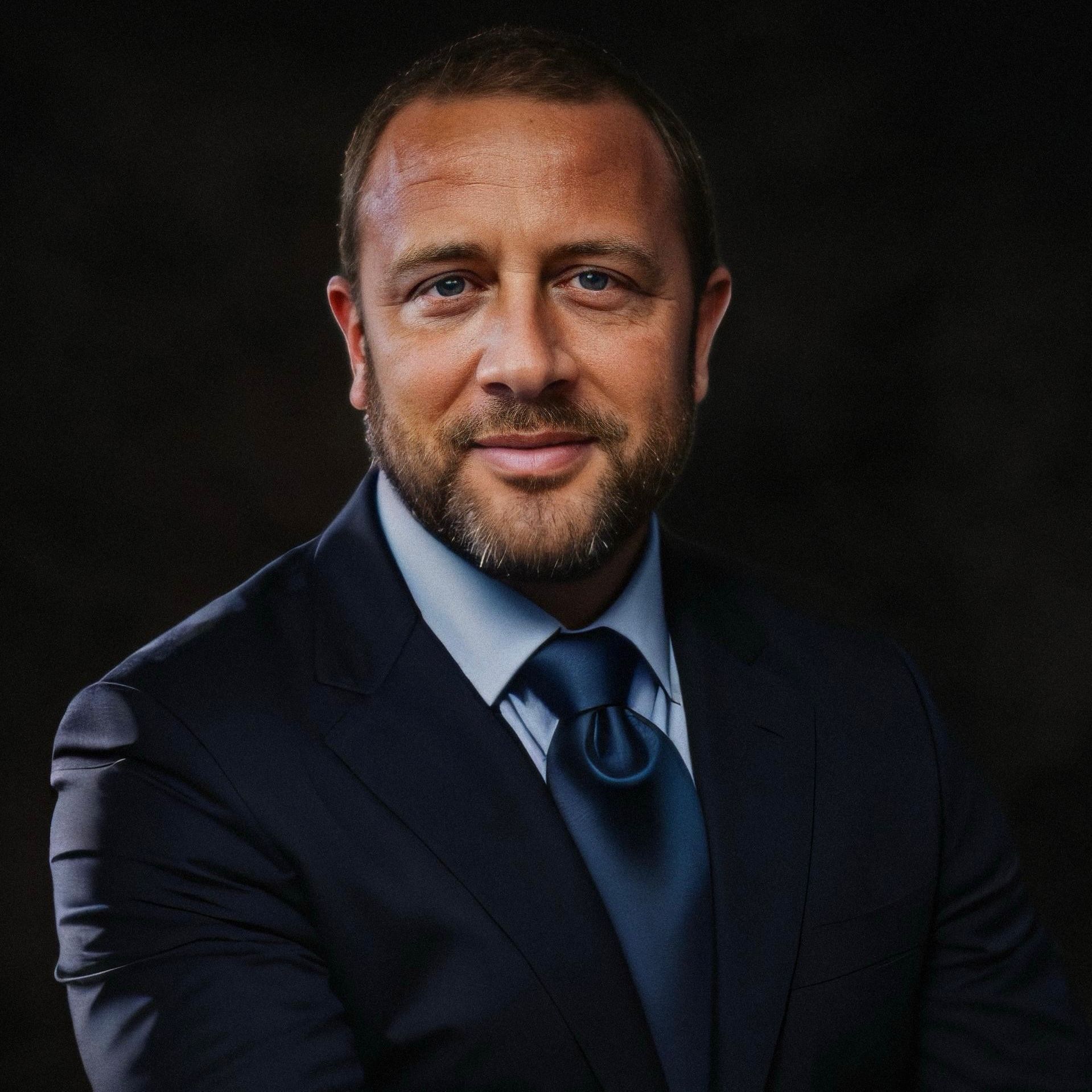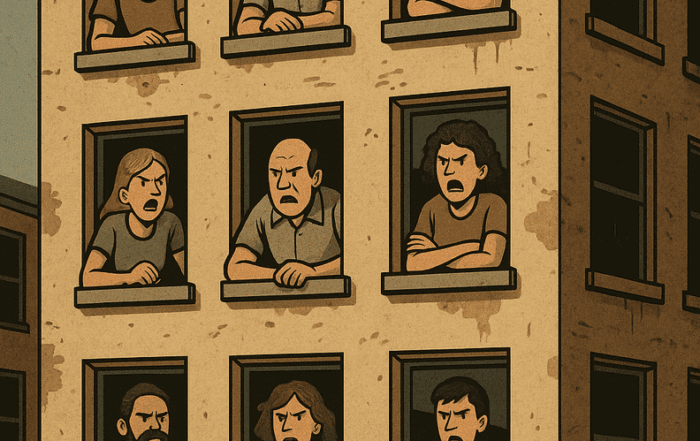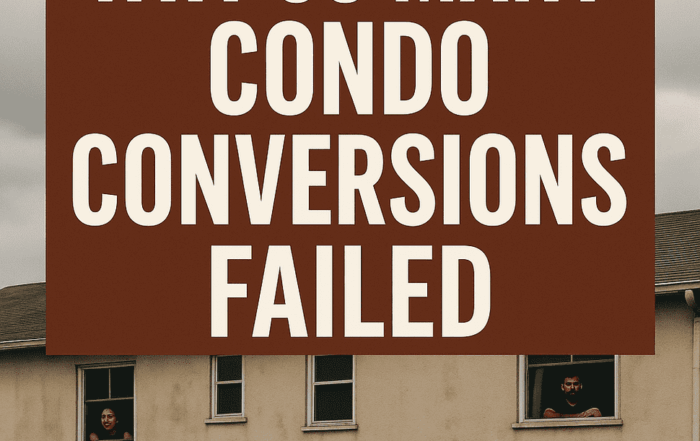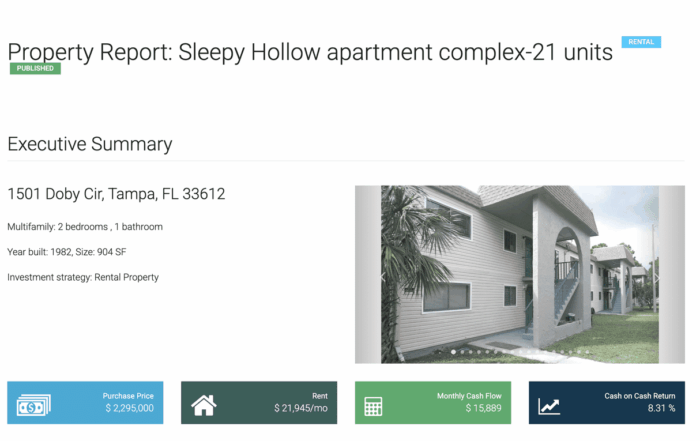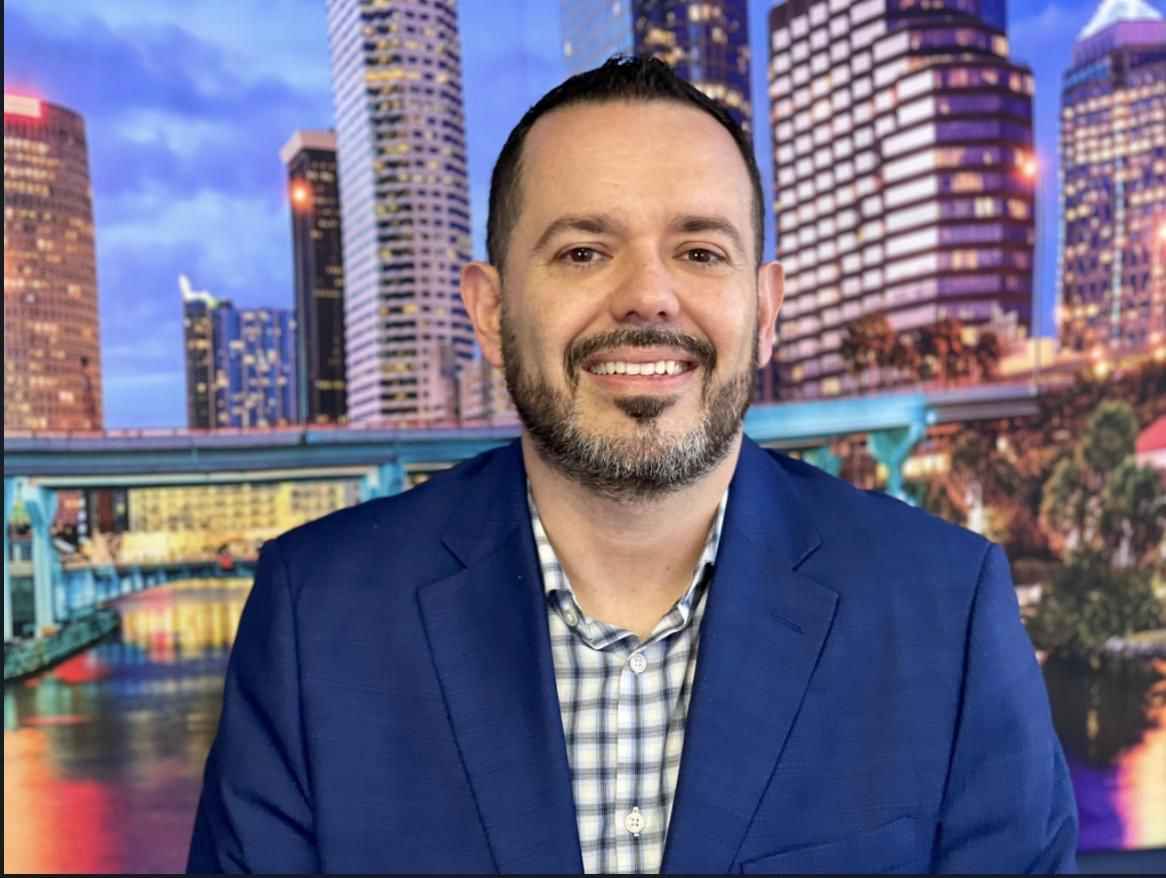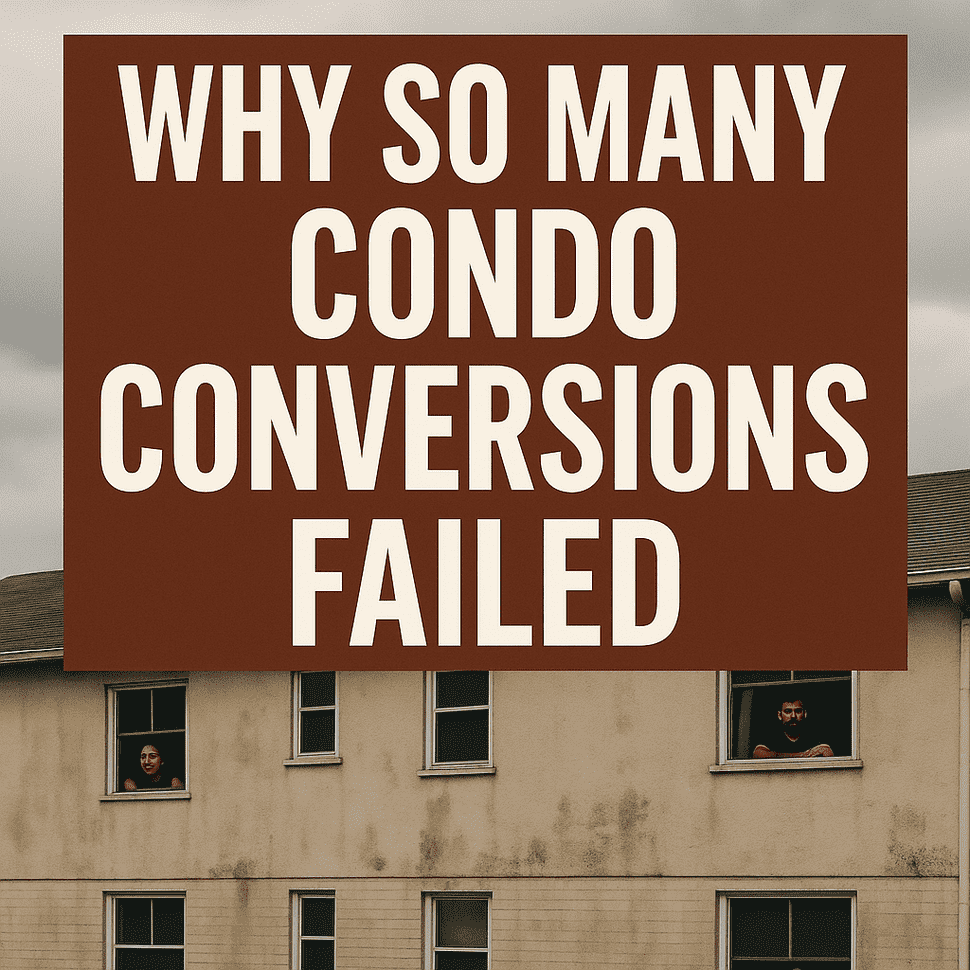
Creating an HOA When You Own the Whole Building (And Why So Many Condo Conversions Fail Without One)
Let’s go back a few years—condo conversions were hot. Everyone and their cousin was turning old apartment complexes into shiny new condos. Why? Because it looked like easy money. Take an old rental building, slap on some fresh paint, split it into individual units, and sell each one for a profit. On paper, it was a gold mine.
But here’s the part they don’t tell you: most of these conversions ended up as disasters. Why? One word—HOA.
You see, when the original developer sells a few units and then walks away without setting up a strong, active homeowner association, the whole thing starts to unravel. No one’s collecting maintenance fees. No one’s managing repairs. Everyone’s pointing fingers while the roof leaks, the landscaping dies, and the building literally starts to rot from the outside in.
I’ve seen this movie play out more times than I can count—and I lived it firsthand with a deal I did in Tampa.
The Tampa Property That Looked Great on Paper
This place used to be an apartment complex. Then someone decided to do a condo conversion. They sold off a few units, cashed their checks, and disappeared. What they left behind was a building with no leadership, no active HOA, and no one maintaining the common areas.
When I walked in, it was chaos. Owners weren’t paying dues (because no one was collecting them). The roof hadn’t been touched in years. Water damage was creeping into multiple units. And get this—one unit had a massive hole in the floor, filled with water and crawling with roaches. I wish I was exaggerating.
But I saw the potential. I went big and bought 19 out of 22 units. Eventually, I locked up options for the last three.
Why Creating an HOA Was the Only Way Out
Even with 19 units under my belt, I couldn’t fix the roof or clean the property without going through every other owner. And let me tell you, the last two weren’t exactly eager to help. They hadn’t paid a dime in years and didn’t even return phone calls.
So I did what most investors won’t—I rolled up my sleeves and created an HOA from scratch. Filed the paperwork. Brought in attorneys. Reestablished control. It wasn’t pretty, but it gave me the legal and operational authority to:
-
Enforce rules and basic upkeep
-
Start collecting dues
-
Approve repairs (like that leaky roof and swamp-condo)
-
Put pressure on the remaining unresponsive owners to cooperate—or sell
And guess what? It worked. We cleaned it up. Fixed the roof. Painted the building. Landscaped the front. It started looking like a real community again, not a forgotten leftover from a failed flip.
The Truth About Condo Conversions
Now here’s the hard truth: tons of condo conversions fail because no one sets up a proper HOA. Everyone thinks flipping rentals into condos is easy money—but the second you sell that first unit, you’ve split control.
Unless you lock up a majority, you can’t:
-
Force repairs
-
Collect money
-
Make decisions
-
Or even qualify for good financing
Most lenders won’t touch a broken condo deal. And buyers? They run the other way the moment they hear “inactive HOA.” Why? Because they’ve been burned before.
So if you’re looking at one of these deals, dig deep:
-
Ask if the HOA is active
-
Check their reserve funds (or lack thereof)
-
Look at the bylaws
-
See who owns what—and how many units they control
If you see a bunch of absentee owners and a roof from the Clinton era, run. Or go in knowing you’ll need to take over—fast.
Final Thoughts
Condo conversions were one of the biggest trends in real estate for a while—and many of them blew up because the HOAs were either weak, mismanaged, or just didn’t exist. This Tampa deal? It was one of the worst I’ve seen. But once we got control and built an HOA the right way, the value turned around fast. Rents went up. The building stabilized. People stopped complaining. I stopped losing sleep.
Bottom line: an HOA isn’t just paperwork. It’s the glue that holds a condo project together. Without it, everything falls apart.
Creating one from scratch might sound like a nightmare—and sometimes it is—but if you want to save your investment, you’ve got to lead, not just buy.
Keep it consistent, stay patient, stay true—if I did it, so can you. This is Jorge Vazquez, CEO of Graystone Investment Group and all our amazing companies, and Coach at Property Profit Academy. Thanks for tuning in—until the next article, take care and keep building!
If you’d like to connect directly with me, feel free to book a time here:
👉 https://graystoneig.com/ceo
Pick your expert. Book your free 15-minute consult now. We are here to help!
Our Top Articles
How to Create an HOA in Florida (And Why You Might Need One If You’re Buying Into a Condo Mess)
How to Create an HOA in Florida (And Why You Might Need One If You’re Buying Into a Condo [...]
Why So Many Condo Conversions Failed?
Creating an HOA When You Own the Whole Building (And Why So Many Condo Conversions Fail Without One) Let’s [...]
The Real Numbers Behind My $2.3M Multifamily Deal (Sleepy Hollow P&L Breakdown)
Title: The Real Numbers Behind My $2.3M Apartment Deal (Made Simple) Let’s keep it real. You can talk about [...]
Property Profit Academy:
✔ Learn to buy properties with little to no money down.
✔ Build a $10M portfolio step by step.
✔ Master strategies like BRRRR and house hacking.



